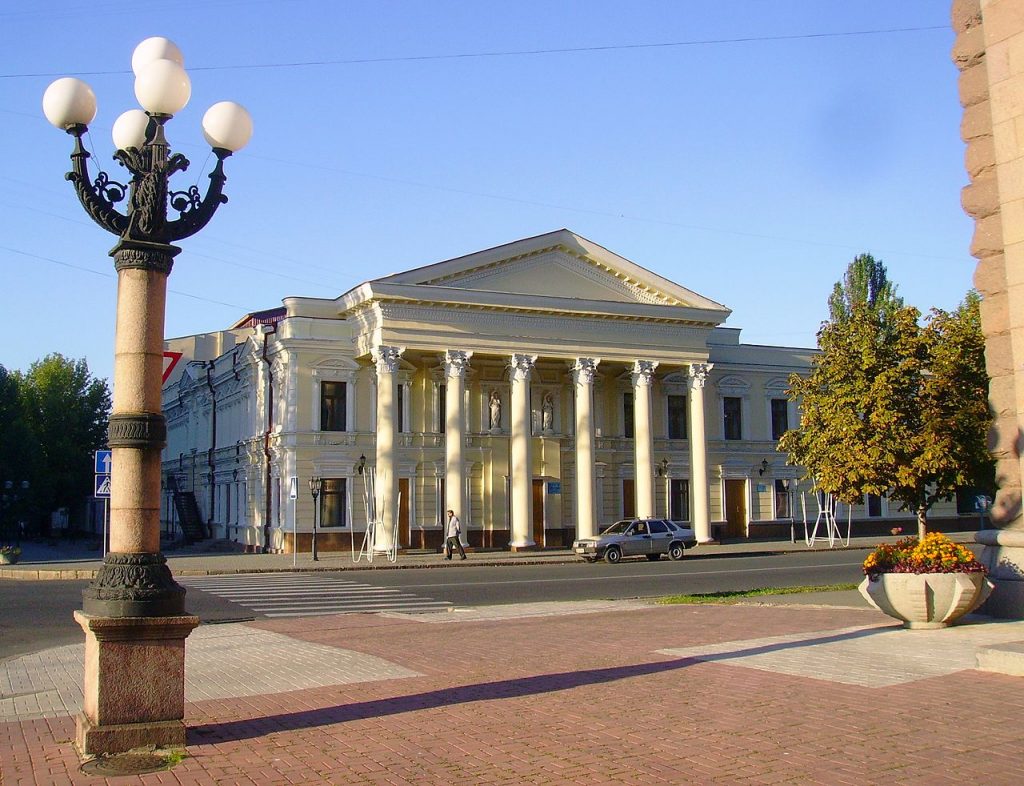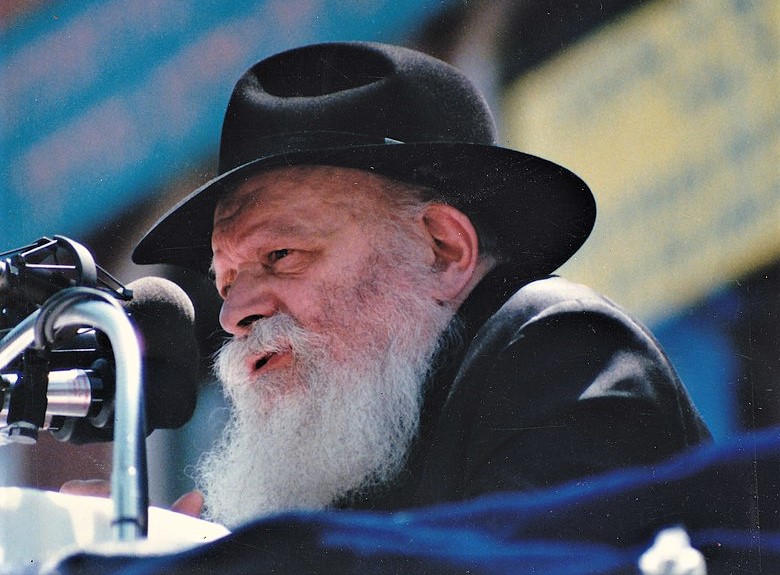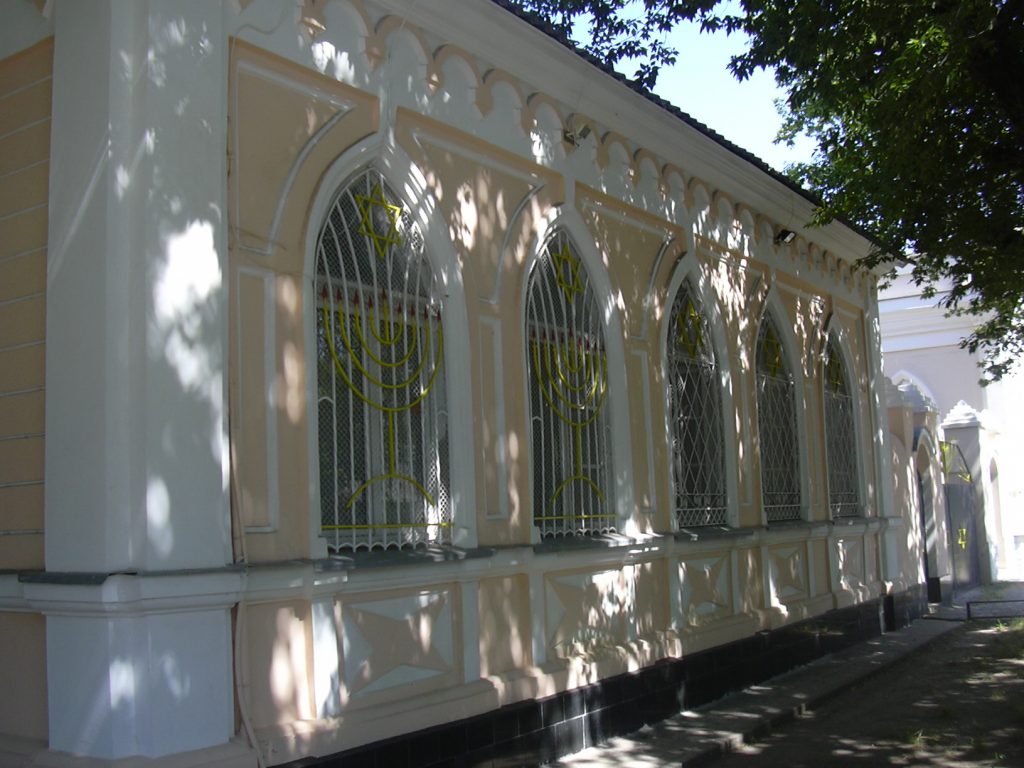
The terrifying war against Ukraine changes, of course, the function of these pages devoted to the Jewish cultural heritage of that country. Many of the places mentioned were razed to the ground by bombs. While these pages are not intended in the present time for tourism, they may be useful to researchers and students as historical references. References to so many painful histories during the pogroms and the Shoah, but also to the glorious history of Ukrainian Judaism, in its cultural, religious and Zionist dimensions. Wishing the Ukrainian people a speedy end to these atrocities of which they are victims.
Located at the junction of the Ingul and the Boug rivers, Nikolaev has a lesser known Jewish history than its 200 kilometers neighbour Odessa. However, it is a city with an important Jewish past: the lubavitch rabbi Menachen Mendel Schneerson was born there and Isaac Babel spent in Nikolaev some of his childhood years.

To get there, the simplest and cheapest is to take the marshroutka from Odessa’s Privoz bus station. During the day, there is one shuttle every 15 minutes or so. Once in Nikolaev, you can get down at the Tsentralnaya street (old Sovietskaya street), which is the only pedestrian street in Nikolaev, and located not far from the synagogues. From Odessa, you can as well take a taxi to Nikolaev, it will cost you about 60 Euros.
A community composed of Galician Jews
The first traces of a Jewish presence in Nikolaev date to the city’s foundation, in 1789. The city was back then mostly made of Jews from Galicia who came to build the Russian port. They rapidly grew strong enough to build their first synagogue in 1819, now known as the ancient synagogue, the building still stands.
In 1829, using the argument of military presence in Nikolaev, the Russian Empire forbade the Jews to live in the city. However, the city council, aware of the Jewish community economical importance disputed the Empire’s edict, which was nonetheless carried out in 1834. It will finally be under Alexander the Second reign (1855-1881) that Nikolaev will be integrated into the Residence zone and that the Jews will have the full right to inhabit it.
Place of birth of Rabbi Schneerson
According to the 1897’s census, the Jewish community of Nikolaev counts 22,000 people, 20% of the city’s population. The city had two synagogues, 15 prayer houses, and 15 schools. It is at this period was Menachem Mendel Schneerson, the famous Habad movement rabbi, was born. He will die in 1994 in Brooklyn. Also, in those years, Isaac Babel was a young boy in Nikolaev, before coming back to Odessa.
You can start your visit from Tsentralnaya street, toward Mala Morskaya, and until Velika Morskaya street. On the right, at number 71, you’ll find the building of the Landau Pharmacy, active in the 1870s, and which was one the the biggest in the city.
Taking the street in the other direction, you’ll cross Schneerson street (old Karl Liebknecht street): at number 15 you’ll find the only active synagogue of Nikolaev ran by the Habad movement. There is a mikvah as well. The Jewish community, around 2000 people, gathers here.
The Jewish Quarter
The adjacent building is the first synagogue of the city, which was built in 1822, and that was sometimes called the cobblers’ synagogue -the Jewish craftsmen were in majority shoemakers for the sailors of the city.

Although it hasn’t been in use since 1935, the building is in relatively good condition. Indeed, in 1935, the Soviet authority closed the synagogue and gave the building to various labor or cultural institutions. This sudden change of function explains why you will find soviet frescoes on the building’s facade.
Isaac Babel’s studies
At the corner of Velika Morskaya and Artilleriskaya, you’ll find at number 19 the old business school of Nikolaev. This building, mainly funded by Jewish tradespeople of the city, and therefore not affected by the quotas on Jewish students, was the school of Isaac Babel. A commemorative plaque outside the building is to be found.
On Spasskaya street, a parallel to Velika Morskaya, you can admire beautiful houses that once belonged to the Jewish nobility of the city and which are still in perfect condition. At number 18, you’ll find the Meshyres family house, and, at number 20, the Erlikh House. At number 33, you’ll find the Forshteter house.
Monument honoring the Lubavitch rabbi
Going back to Tsentralnaya street, and go toward Moskovskaya street. At the corner with Potemkinskaya street, at number 67, you’ll find the building that once housed one of the city’s heder.
Built in the 1820 in a mauresque style, the house was a pharmacy before becoming a study place. The facade is still intact. Walking back to Moskovskaya street, you’ll see at number 69 the monument to rabbi Schneerson, erected in 2011 at the location of the house where the rabbi was born in 1902.
Holocaust memorial
Finish your discovery of the Jewish Nikolaev by visiting the city edges. Walk on Tsentralnaia street until the end, at the corner with Kherson road, you’ll find the monument to the Shoah victims. About 10,000 of the city’s Jews were killed during the Second World war, half of them in August 1941.
The Nikolaev region hold a special place in the history of the bullet shoah. Indeed, in the north of Nikolaev were located the majority of the Romanian ghettos. The massacre locations are in general marked by a memorial, ans you can seek help by asking Nikolaev inhabitants where to look for. Going back on Kherson road for about 200 meters, you’ll find the Jewish cemetery, still in activity but poorly taken care of.